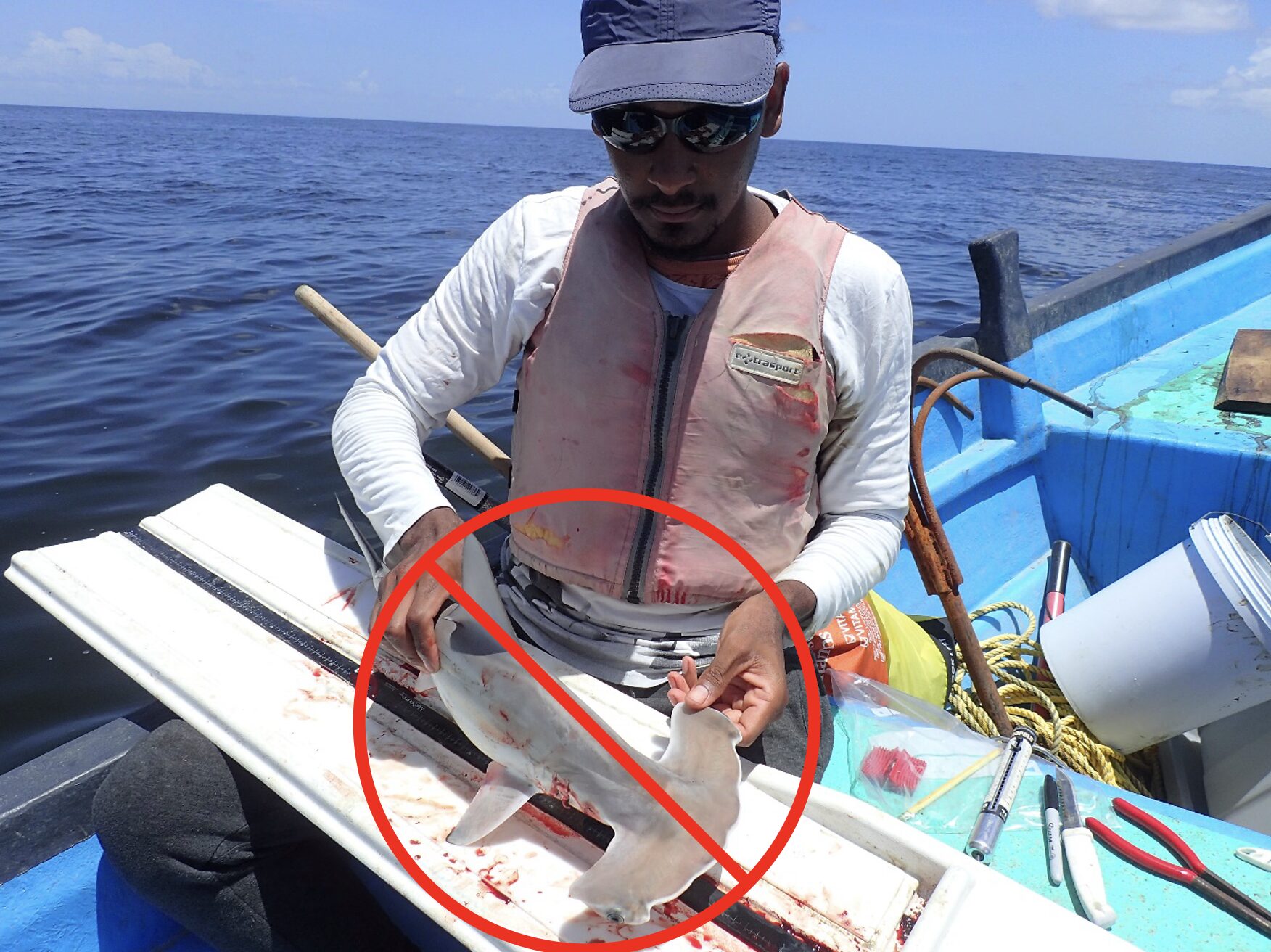How NOT to catch a scalloped hammerhead!
For our project we have been trying to catch large numbers of juvenile scalloped hammerheads alive in order to tag them with dart tags and pit tags (see image below). By catching, tagging, and releasing an abundance of tagged individuals, we or other fishers are more likely to recapture some of them. When the hammerheads are recaptured, we gain knowledge on their movements, that is to say, how far they have travelled from where they were first caught to where they were recaptured, and an estimate of how long it took them to move that distance. If they didn’t move far, especially over a long period of time, that tells us they likely have high site fidelity, meaning they stay in that area and it could function as a nursery. By measuring the sharks when they are caught and recaptured it gives us data on their growth rates and what sizes are using the potential nurseries. The times of capture tell us the months that these juveniles use these areas. We can also use the recapture data to predict population size and mortality.

Terryn Constantine with one of the scalloped hammerheads that was dead on arrival. Photo © Kelly Kingon
Unfortunately, we have not had much success catching scalloped hammerheads and over three years we have only been able to tag one of the five individuals caught due to unintentional mortality of the others. Hammerheads are very susceptible to stress and death when captured due to their high oxygen needs and fragile nature. In light of this, we are providing some tips on how NOT to catch scalloped hammerheads as the methods we have tried don’t seem to work very well, but we have caught lots of other sharks, rays and bony fishes. So if you want to save the scalloped hammerheads but catch other species these pointers could be helpful!
- Fish during the day
- Soak your fishing gear (i.e. leave it in the water fishing) for a short period of time, an hour or less
- Fish using any of the following baits: bonito, herring, mullet, ladyfish, catfish
- Use a longline with 50-100 circle hooks of two sizes, 8/0 and 10/0, on 3m 500 lb test monofilament gangions
- Use a small gill net 4.27m high x 160m long with 12.1cm stretched mesh size
- Use hook and line with various small hook types and sizes
- Go out fishing with artisanal fishers, who target sharks or don’t
- Go out fishing with charter fishers, who target sharks or don’t
- Fish during all the tidal cycles
- Fish during all the moon cycles
- Fish during any kind of weather: rain, hot sun, overcast
- Fish during any strengths of wind and sizes of waves coming from any or all directions (what I call the washing machine effect that is quite frequent in Trinidad)
- Fish during any strength and direction of current
- Fish with any mix of crew members: few people, many, experienced or not
- Fish with locals
- Fish with foreigners (we did catch more sharks with them but no hammerheads)
- Fish in water with any oxygen level
- Fish in water with any salinity
- Fish in clear or murky water
- Fish at any depth
- Fish at any distance from shore
- Chum the water or don’t
- Fish near river mouths or away from them
- Fish off any of Trinidad’s coastlines
- Fish on any type of substrate: mud, sand, rocky reef

Above is the pit tag that is inserted internally into the muscle tissue and below is the external dart tag that is inserted under the first dorsal fin. Photo © Kelly Kingon
We tried all types of methods but with minimal success to catch hammerheads alive. The longer soak times that we tried (one hour after full deployment of the gear) initially caught a few but resulted in high mortality. By retrieving the gear after or shortly after it was deployed most of our catch was alive but then we caught even less hammerheads. Luckily we have been able to get a lot of data from the fishers’ landings to help compensate for this conundrum. The fishers have no trouble catching them dead already but hopefully our recommendations to come can help reduce those numbers.
